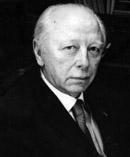The other day I was listening, and re-listening, to the 1938 Chu Berry-Roy Eldridge recording of the 1930 song Body and Soul. This irreplaceable side isn't a case of jazz musicians making something out of nothing, as Louis Armstrong did with a weak song like Sweethearts on Parade. With Body and Soul there's much to inspire the improviser. The tune, in Ruby Braff's words, has a lot of meat on it.
That's because of composer Johnny Green.
From his family and European tutors Johnny Green inherited the musical language of the classics. The music in the air in New York when he was young was a medley of ragtime syncopation, Victor Herbert, George M. Cohan, Sigmund Romberg, Americanized versions of Strauss and Lehár, tunes influenced by Victorian salon songs, English music hall, and minstrel shows, John Philip Sousa, Enrico Caruso and John McCormack records. This and more helped shape the idiom of the Tin Pan Alley songwriters.
When I listen to Body and Soul, I hear a melody line and harmonies in the opening eight bars that could -- in different context, rhythm, and instrumentation -- be redolent of operetta. The same can be said of Green's Out of Nowhere and so many other early pop hits. As the musicologist Legrand Sidney Doggett has rightly pointed out, "Irving Berlin's What'll I Do? is pure Vienna." The modulations in the Body and Soul bridge, so ripe with challenge for a good improviser, reveal the composer's technical training in the European classical tradition. Like Bix Beiderbecke and other intellectually curious musicians of the time, young Johnny Green would also have been eagerly soaking up the new French impressionism of Ravel and Debussy. Echoes can be heard in the chromaticism at the end of the bridge, bringing us back to the home key. Add to all this the skills snd sensibilities of musicians like Berry and Eldridge, and you have a heady musical mixture.
Critics and musicians these days seem ever-eager to "fuse" jazz with other musics. Jazz should always be open to new influences, but I laugh when people talk about fusion as if it's something new. Fusion has already happened, in a huge way. It happened organically and spontaneously. It's called the Great American Songbook. It's called jazz.




















